Melbourne: Andrew Ross tells us why surfing will never be the same again
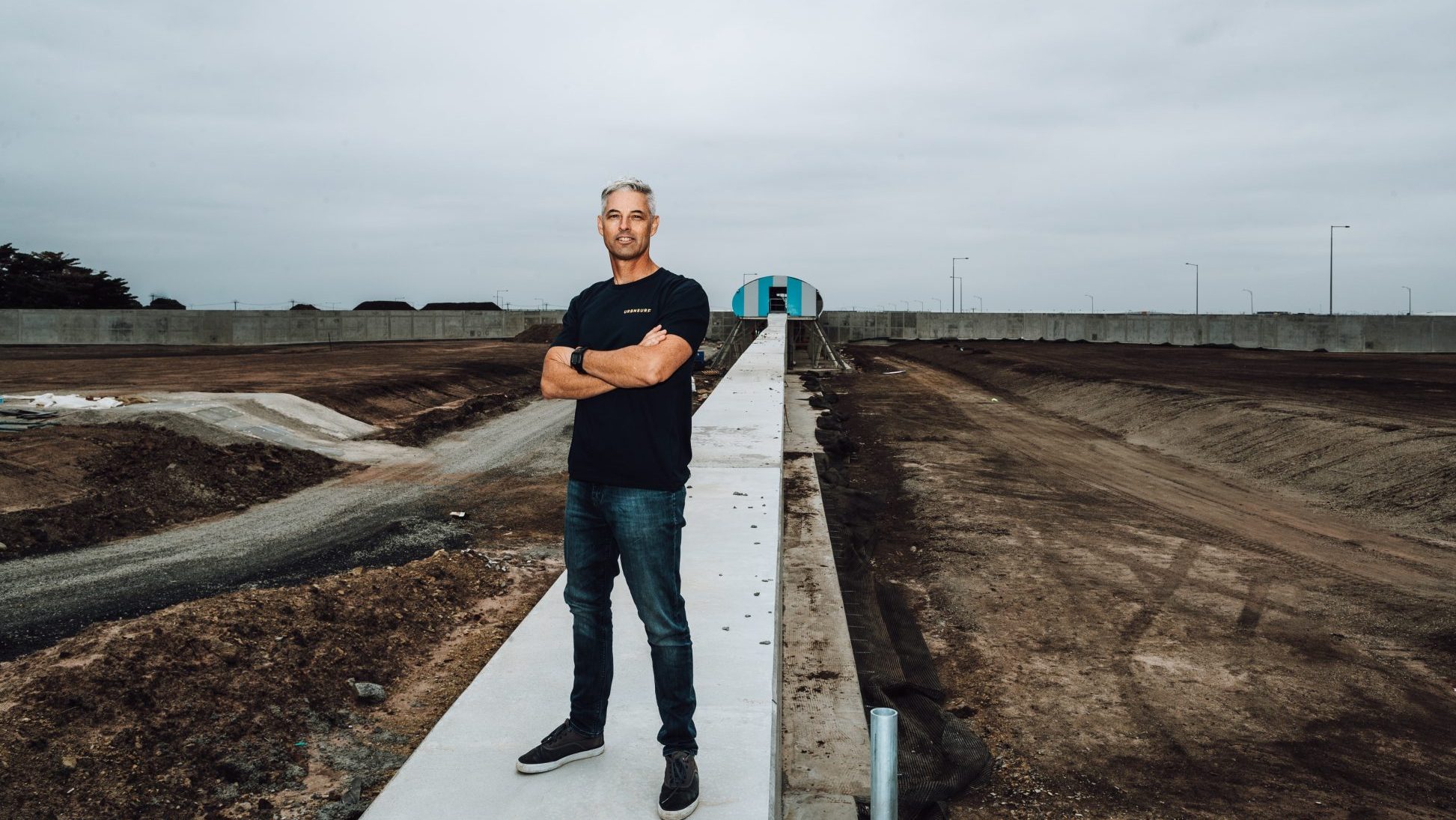
From calculating urea content to Aussie pride, much more goes into wave pool planning than you would think…
Andrew Ross is perfectly groomed for making wave pools. A practiced attorney who worked in London as an investment banker, he’s able to hopscotch legalities inherent in artificial wave generation while at the same time drumming up cash to launch something as ambitious as Australia’s first wave pool. Business acumen aside, he’s quick to point out that without artistic vision and merit, something as creative at its core as Wavegarden’s Cove tech, he would never have finished the run from pipe dream to pool coping.
Mr. Ross is at the
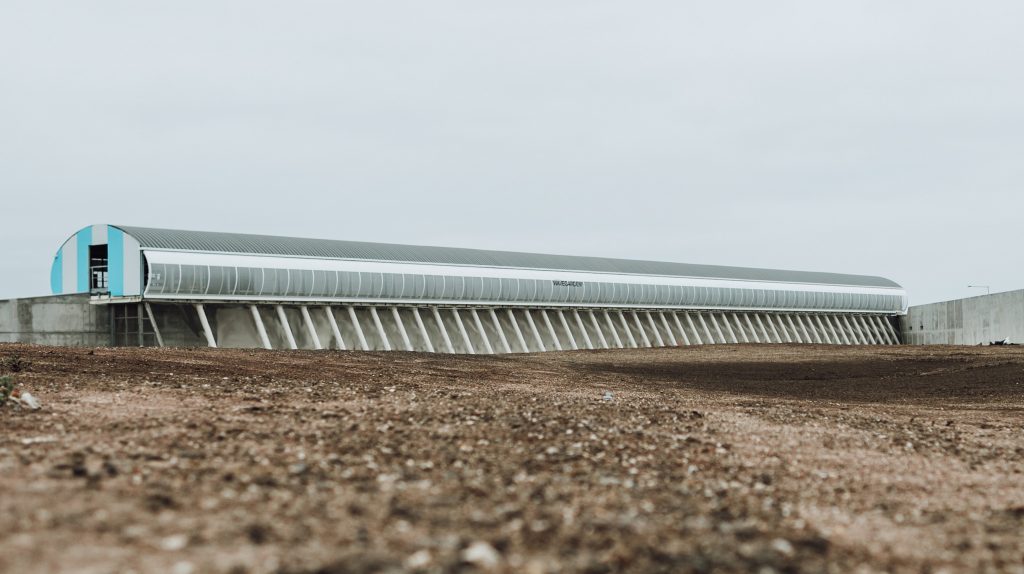
Some “oh, wow” moments we discovered during our interview:
- They have a “wave chef” named Chris
- All level of surfers can surf the pool at the same time
- Wave action oxygenates the water so it’s pretty darn clean
- There will be amateur surf leagues sponsored by local businesses
- You can stifle onshore wind with a 10-foot high canvas wind break
- The wave-generator machine is named after a particularly violent patch of ocean
Read on to get the full details…
You own the Wavegarden Cove licensing for Australia. How involved is Wavegarden in the construction process? Do they just hand over blueprints and say “good luck boys. See ya.”
The Wavegarden people have been quite intimately involved in the whole process. We actually thought it’d be quite a risk having all their installation technicians coming halfway around the world. They’ve been on site and are very professional. But we did have to change their Basque names and give them Aussie names while they were here (haha).
Good fun. Once you’ve filled the lagoon, what does the test period look like? Do you suddenly hear from friends you haven’t seen in 20 years, what happens?
The test period, well we do have a book of names and it’s getting very long in terms of the test pilots who want to come and test it out! What we’ve decided to do is that we want to give ourselves time to really
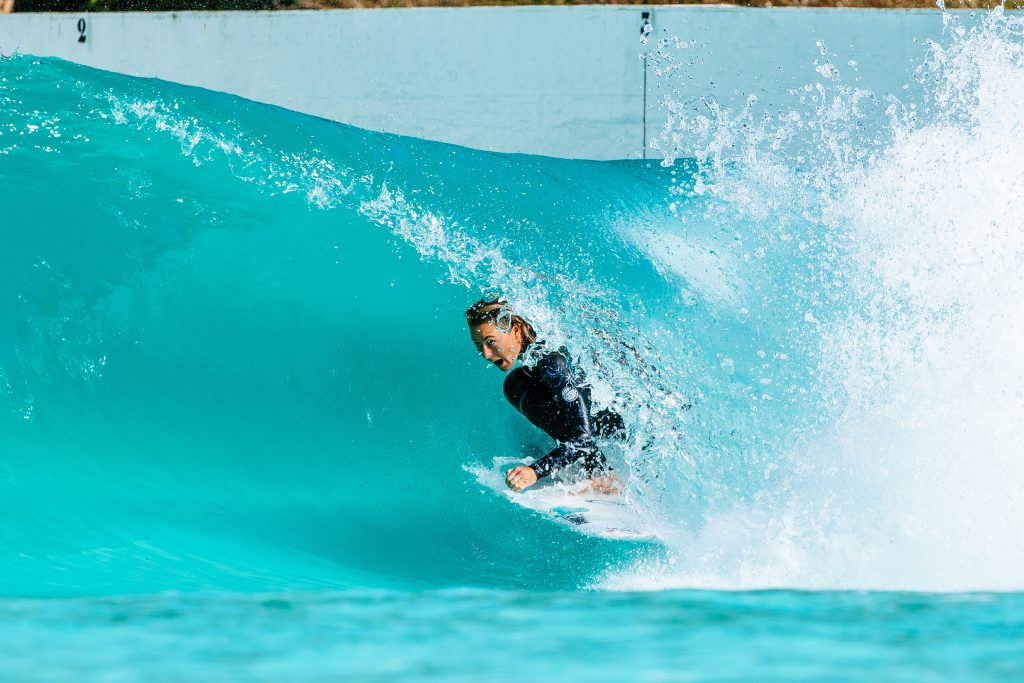
This process must be an incredible learning curve for you. Are there lessons you will take to your projects in Perth and Sydney?
Yeah, it’s been a huge learning curve with Melbourne. It’s the first full-size Cove facility so there’s been a whole range of technical and other issues we’ve had to go through. All the interfaces between the different areas of the facility and how those relate to customer experience is a challenge. Resolving this real time when
What are you doing for water filtration?
It’s been one of the most important elements of the design. These types of surf lagoons are so different from public pools and the like. You have 100 percent oxygenated water because of the wave action. In our lagoon you have to be six years or older to go in, so some of the risk profiles of having kids and fecal contamination won’t be there. The sun has a great sanitising effect as well. We undertook a global search for engineers to work with us to design and build our water treatment. So we have built a specialised water treatment system here. And we’ve even modelled how much urea we think will be going into the water with guys and gals weeing in their wetsuits that we might have to deal with, as well as deposition of zinc oxide and sun creams and how that might affect things over time. So we’ve developed our own system that’s unique and really amazing and meets all our requirements. The system’s being commissioned right now. It’s being connected to our hydraulic system and to the water supply. In terms of how it works we can’t give away too much. Suffice it’s safe to say it provides a lightly chlorinated environment that will give water quality that’s equivalent to Melbourne drinking water. When you surf in the Cove test facility and you get thirsty after 50 waves you can just dunk your face into the lagoon and drink.
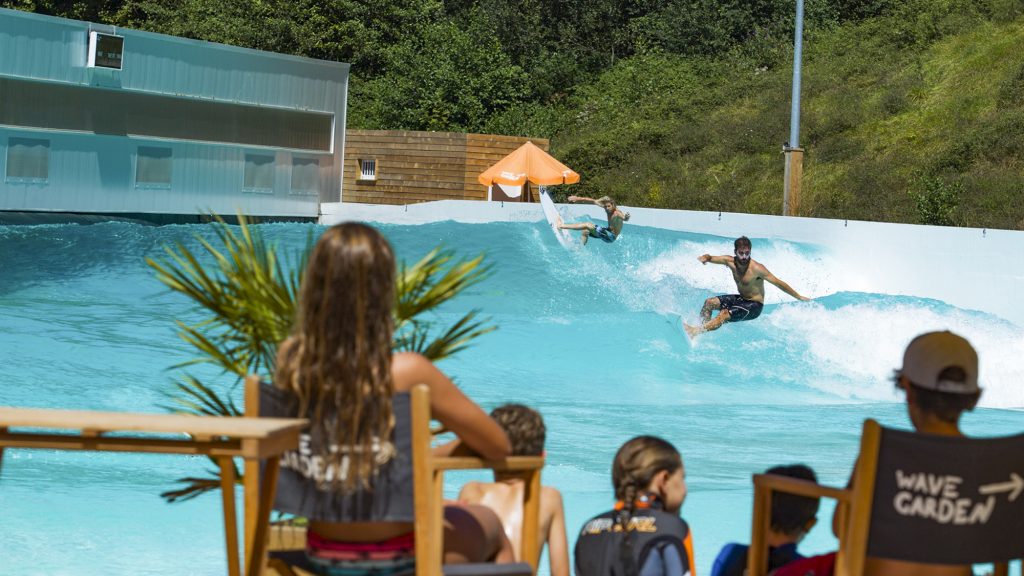
There was a clip of Ocean Dome in Japan where Owen Wright gets out of the water so he can run go and have a pee.
Yeah, well good on Owen for doing the right thing and going to the toilet instead of peeing in the lagoon.
We understand it can get quite windy out by the airport, how is the pool dealing with that?
Melbourne has autumn and winter winds from the north and northeast mostly, so we had to make a decision as to how to orientate the lagoon. So with the bottom contour of the lagoon, we had to marry that up to the slope of the site when factoring the direction of the winds. So in winter you’ll have
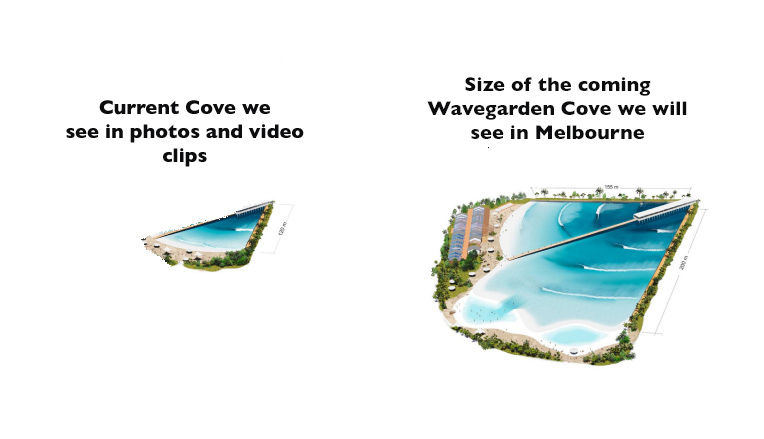
Are you going to offer the pool to the Aussie team for training?
For
I think on the more elite level, well, that’s something we’re keen to explore. After watching the Founder’s cup and the like, I’m not actually sure whether wave pool tech is advanced enough to match the skill of the true, elite professionals. The Wavegarden guys might kill me for saying this, but I have a sense that there is still a ways to go to offer a truly elite wave that matches the performance level of what those guys can do.
Manmade environments are absolutely, fundamentally key to advancing performance. From the competitive point of view, amateur surf leagues, which we have planned for our lagoons, we’ll have team-based surfing competitions for amateur groups like indoor cricket or netball but for surfers. There would be, say, a team of four on each team and they’d get together on a Tuesday night at 7:30 pm and each of us would get a dozen waves and our two best rides from that heat would be tallied together and that would determine a winner. We could have a 10-week season and you could have finals and you could do pro ams and just really expand. Man-made waves allow you to engage with surf in ways which we haven’t really been able to before.
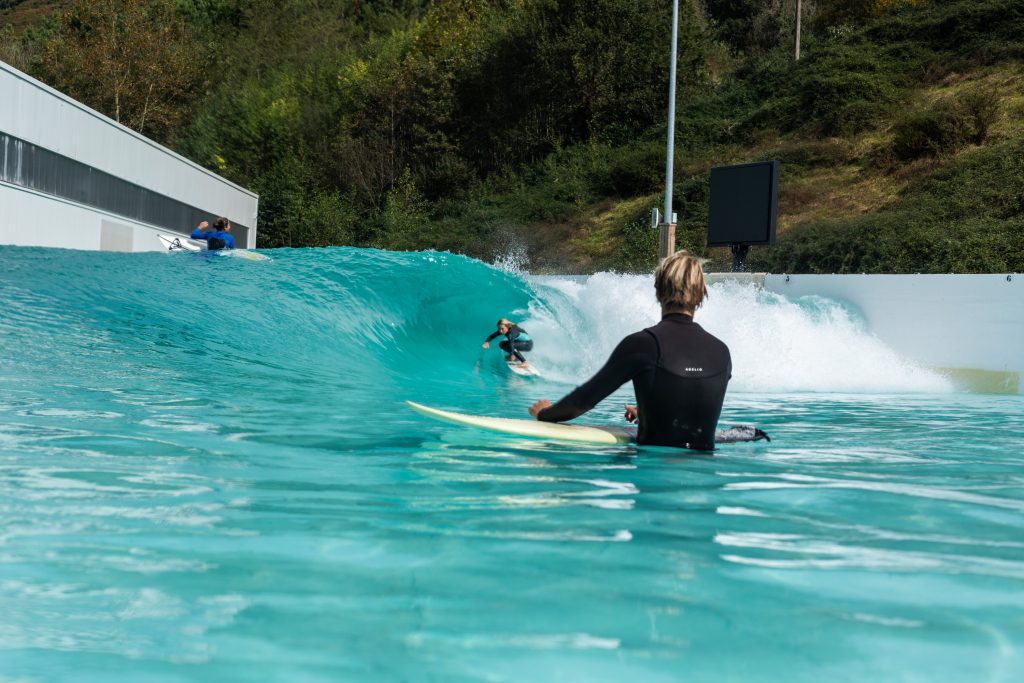
Who’s going to surf the first wave?
That’s probably got my name on it. I’ve been hoping and praying for this day for six-and-a-half years since I first surfed in the original Wavegarden lagoon. I’ve challenged the team to get some Aussie heritage surfboards. I’ve got a 1980s retro twin fin shaped by Mark Richards my friends gave me for my 40th birthday. That’s been sitting on the wall unwaxed for a few years now. So I’ll take that one down, wax it up and that will be the first board to ride the first wave at the first surf park in the Southern Hemisphere. The crew is looking at getting some Bonzers, Simon Anderson thrusters
Why did you choose wave pools as your career path?
I was reading in the surf press and saw that Greg Webber was in a patent dispute with Kelly over that wave pool design, the circular one I think. And it just sort of piqued my curiosity and rather than it just being a thought bubble, I thought well, maybe I’ll get in touch with these guys. So I spent half a day in Sydney with Greg to see what his ideas were and talked to the people at Kelly’s group and through that process discovered the Wavegarden guys. And at that point, they only had that really agricultural looking wave with the plastic bottom and I think the clip was of Mick and Owen surfing and getting deposited on their butts at the end of the ride. Then I called Wavegarden and chatted and came away thinking ‘wow, these guys are the real deal.’ So, I found myself in Spain in 2012 and met up with them. And I came to it really skeptical thinking the wave was going to be really soft, or the wave’s going to be crap. I remember paddling into my first wave, about thigh-to-waist high and did six or seven turns and thought, ‘my god, I’m gonna have to write you a check for this.’ And that was the beginning of the journey.
That prototype wave is a little harder breaking than NLand and Snowdonia?
Yeah, there was a compromise there. They had to move the breaking part of the wave a little further away from the pier for safety reasons in a commercial environment. It’s really interesting. I’ve spent a few years now in this space, and talking with Josema Odriozola, the founder and CEO of Wavegarden, and it just strikes me that there’s a huge degree of art in all this as opposed to just science. To get perfectly formed waves you need to be a really good surfer with an amazing amount of experience and a wonderful eye. As well as being a wonderful engineer. And I think that’s
Trackback from your site.
Related Coverage
